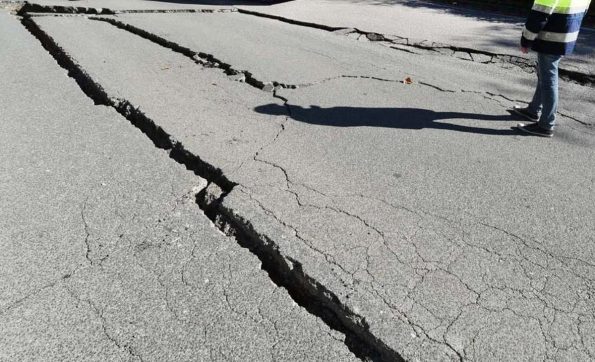While we don’t have as many earthquakes in Australia as the shaky isles they call New Zealand, there are still a surprising number. Most of the time they are too small to feel while you’re driving, but if it’s a big jolt you might feel it as well as see evidence around you of what’s happening.
Earthquakes rarely last more than two minutes, and mostly they are between 10-30 seconds, however, there may be frequent aftershocks after the main quake for several hours, gradually diminishing in frequency.
How can you tell if an earthquake is happening while you’re in your vehicle?
If your vehicle suddenly deviates off course and then continues to seem like it’s being buffeted or your tyres have gone flat, then it could be happening, but this isn’t a reliable way of telling. If you can also see trees, power poles and traffic lights swaying even if there’s no wind.
If you’re in an urban area with high rise buildings you could see glass falling.
It might look like dust is rising in the distance.
If you’re on a country road then you could see landslips happening, and cracks forming in the road.
If you are close to the epicentre then you might hear its effects – a low rumbling and the noise of buildings or trees creaking and cracking.
What to do when driving in an earthquake
Finding a safe place to stop is important. The safest place is in the middle of a field with no trees, buildings or electricity pylons around, and it’s away from the sea. However, this is not likely to be the case. If you can’t get away from everything, stay in your car until the shaking stops as it will give some protection from falling objects (obviously not buildings, though). If you carry on driving then you could come around a corner and find a landslide, fallen tree, a bridge out or large cracks and fissures in the road.

Large cracks can open up in tarmac roads which could damage your vehicle
Move away from the sea to avoid tsunami risk. Often if a tsunami will happen the tide will appear to go out a long way before surging back in. You will have a few minutes before a tsunami happens.
Avoid stopping under or on a bridge.
If you’re in a parking building, get out of the car and crouch beside it – the car will take the weight of any large masonry falling on it and should leave a survival space for you.
Check social media for people posting information about the quake, and turn the radio onto a local station that’s likely to carry news.
Within 15-30 minutes newspapers usually report on the story.
You can check the Geoscience Australia website for news.
Don’t call emergency services unless you are in danger, for example power lines have fallen across your vehicle, you are stuck in a deteriorating situation which puts your life at risk, or there is someone with a serious injury. Emergency services will be overload with people calling.
Let your family know that you are safe.
Nighttime is a dangerous time to be driving after an earthquake because it’s difficult to see changes in road elevation. Wild animals could be spooked and, if fences are damaged, livestock could have escaped.
If you live in a zone that’s prone to earthquakes it’s sensible to carry a kit with emergency supplies.
